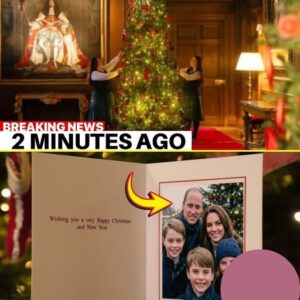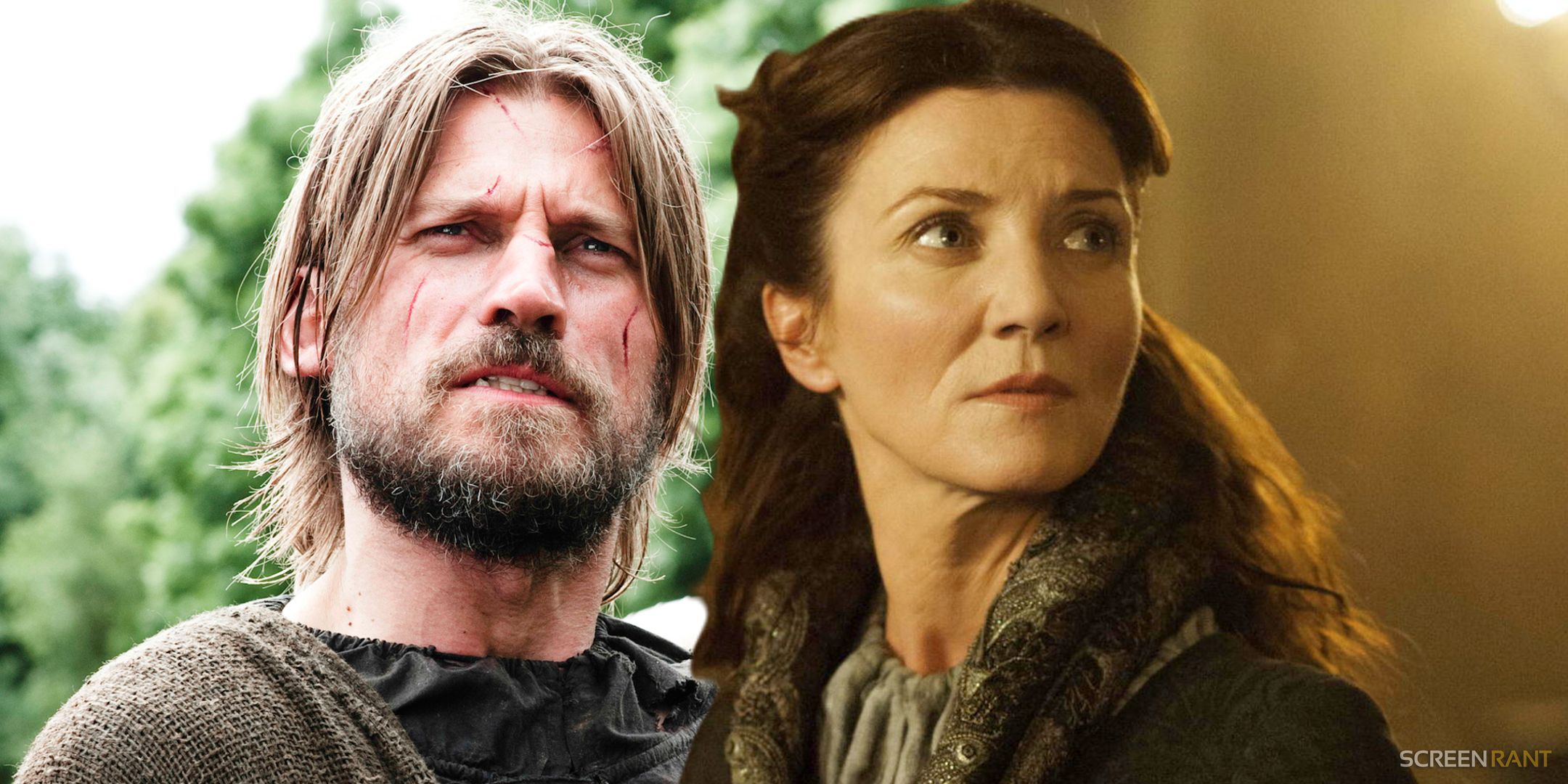
Game of Thrones surprisingly didn’t include Lady Stoneheart, the reanimated form of Catelyn Stark after her death at the Red Wedding. Cat is among the many deaths at the Red Wedding in both the show and the books, but the epilogue of Martin’s third novel, A Storm of Swords, reveals she had been found in the river and brought back to life by Beric Dondarrion, who gave his life for hers.
This is not the Catelyn people knew before, though. Her throat is cut, her face is scarred, and she doesn’t speak. She is, in effect, a zombified version, now going by the name Lady Stoneheart, and out for revenge. It’s one of the biggest twists in the books, and readers anticipated it happening in the TV series, which would’ve allowed Michelle Fairley to remain as part of Game of Thrones’ cast. Alas, it didn’t happen for various reasons – and the Red Wedding itself, in its most famous line, had a big clue she wouldn’t be appearing.
How Game Of Thrones Changed The Red Wedding’s Most Memorable Line
Roose Bolton Offers Up Different “Regards” In The Show Compared To The Book
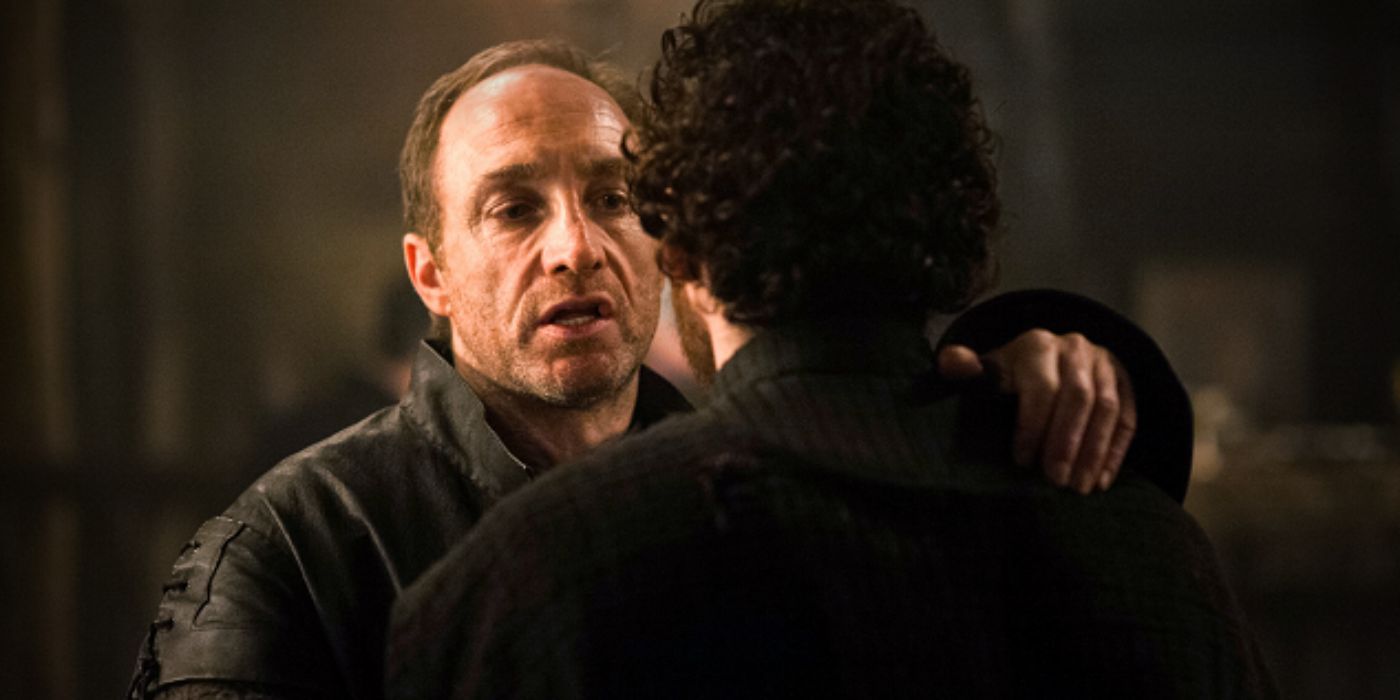
In A Storm of Swords, Roose Bolton strikes the killing blow to Robb Stark, and says: “Jaime Lannister sends his regards.” This itself comes after an earlier exchange between Roose and Jaime, when they parted ways at Harrenhal:
ROOSE: “The Trident is in flood. Even at ruby ford the crossing will be difficult. You will give my warm regards to your father.”
JAIME: “So long as you give mine to Robb Stark.”
ROOSE: “That I shall.”
The pair have a similar exchange in Game of Thrones season 3, episode 7, except Jaime’s line is changed to specifically be “The Lannisters send their regards.” This is what Roose then says as he stabs Robb two episodes later in “The Rains of Castamere,” creating one of the most iconic and memorable lines not just of the Red Wedding, but the entire show.
If audiences forgot, then saying “Jaime Lannister sends his regards” risks making him seem responsible for the Red Wedding to some viewers.
The change in the show really works as one of simplification. Since the Red Wedding episode aired two weeks later, it would be relying on viewers to remember that small exchange between Roose and Jaime. If audiences forgot, then saying “Jaime Lannister sends his regards” risks making him seem responsible for the Red Wedding to some viewers.
“The Rains of Castamere” is Game of Thrones ‘ joint highest-rated episode on IMDb, with 9.9/10. The others are “Battle of the Bastards” and “The Winds of Winter.”
That’s a major shift in the story, and in particular could have negatively impacted his redemption arc, while also just being potentially confusing. Technically, you could argue that’s true in the book, but I think there’s an extra level of attention to detail when reading something like A Song of Ice and Fire, versus more casual audiences remembering every conversation throughout a season of TV.
In contrast, saying “the Lannisters” works much more broadly, and is accurate since Tywin is the head of the family and the one calling the shots. Even if viewers don’t remember Jaime saying it, there’s no risk of confusion here as it works as a means of announcing their involvement, and as an example of Roose’s dark attempts at humor as he kills his king.
Changing “Jaime” To “The Lannisters” Alters Lady Stoneheart’s Story & Purpose
It’s A Subtle But Significant Change To Her A Song Of Ice & Fire Arc
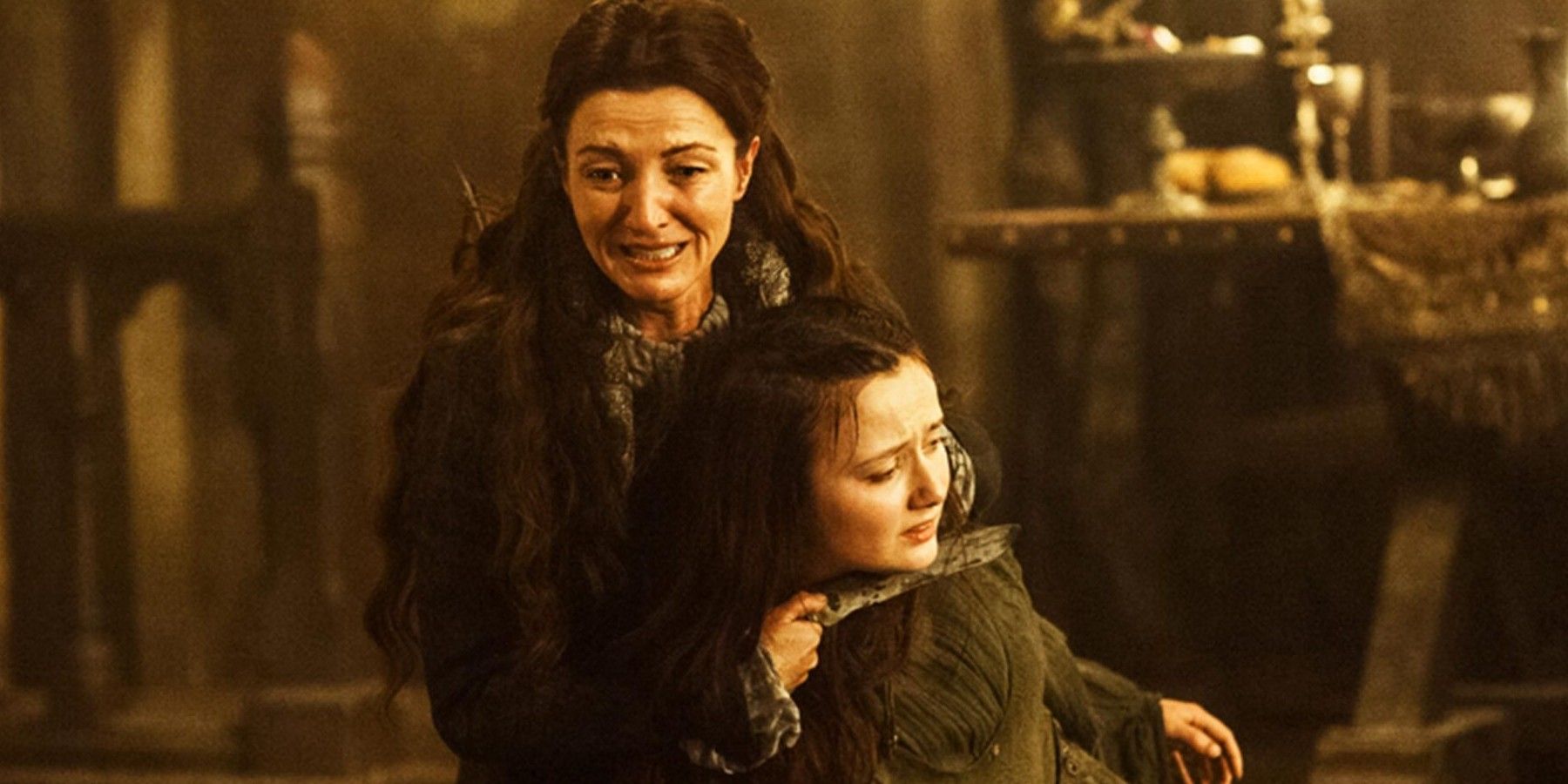
The removal of “Jaime Lannister sends his regards” from the Red Wedding may not have been done specifically because the showrunners planned on cutting Lady Stoneheart, but it does work as an act of foreshadowing for it. In the book, that’s one of the last things (and certainly the last name) Catelyn hears before she dies:
“A man in dark armor and a pale pink cloak spotted with blood stepped up to Robb. ‘Jaime Lannister sends his regards.’ He thrust his longsword through her son’s heart, and twisted.”
When Cat is brought back to life by the Brotherhood without Banners, she returns as Lady Stoneheart, a being of pure vengeance. Her sole mission, essentially, is to take revenge on the Lannisters, Freys, and Boltons for the Red Wedding, but at the very top of her list is Jaime.
Lady Stoneheart has not appeared much so far in A Song of Ice and Fire, but her desire for revenge upon Jaime is absolutely her biggest story to date. In A Feast for Crows, she demands Brienne of Tarth bring him to her; it’s the most shocking and fascinating part of her arc beyond her return itself, and the one that will be at the core of her story in The Winds of Winter. Whether Brienne will betray Jaime for Lady Stoneheart is unclear, but it’s going to be huge for all three of them.
…It’s not just that [Lady Stoneheart] thinks Jaime is the one behind the death of her son, but that she freed him earlier in the story.
Obviously, none of that is in the show, and I think the Red Wedding change points to it. By removing Jaime, it’s making her vengeance mission a lot more broad, and removing the real knife twist: it’s not just that she thinks Jaime is the one behind the death of her son, but that she freed him earlier in the story. That adds an extra layer of tragedy to the character, which is removed if it’s “the Lannisters” she hears.
Similarly, it would risk losing the point of her arc and return. Her slaughtering Freys, Boltons, and Lannisters could be satisfying on its own, but there’s no real drive or connection to the wider narrative (it’s not like she’d be killing Tywin, after all). It could be harder to tie in Brienne (though there’s still the duty element there, at least), as you lose the emotion of bringing her and Jaime into it together.
Ultimately, though, I think what Stoneheart’s story needs to lead to – and what I think Brienne in particular could be a factor in, with Jaime alongside her in some way – is that vengeance isn’t the answer. She needs to serve as a warning sign for what being consumed by revenge does to a person – the Hound’s role in Arya Stark’s in Game of Thrones season 8 story should loosely be hers in the book – and that’s harder to do without all those connections and set ups you remove by changing “Jaime” to “the Lannisters.”
Why Game Of Thrones Cut Lady Stoneheart
David Benioff & D.B. Weiss Had Three Main Reasons
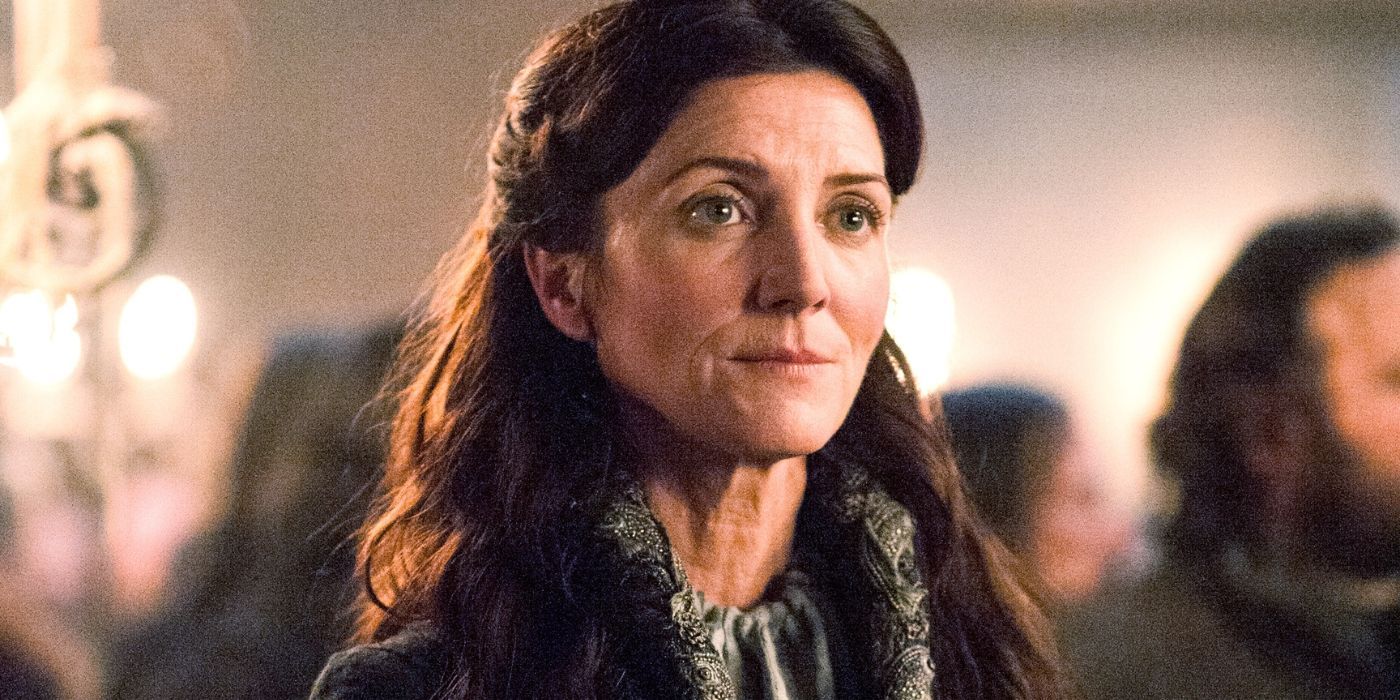
There were a few reasons Game of Thrones decided to cut Lady Stoneheart. Showrunners David Benioff and D.B. Weiss have explained some of them in the book Fire Cannot Kill A Dragon: Game of Thrones and the Official Untold Story of the Epic Series, by James Hibberd:
-
One reason is kept vague, because they don’t want to spoil anything for the upcoming books, but they said it was “to do with things coming up in George’s books.”
To “keep their powder dry” for Jon Snow’s upcoming resurrection, which they knew even then they’d be doing in season 6, Benioff said: “Too many resurrections start to diminish the impact of characters dying.”
To avoid diminishing the returns of the Red Wedding and Catelyn’s death. Michelle Fairley’s final performance was an incredible one, and the showrunners didn’t want to undo that just to “bring her back as a zombie who doesn’t speak.”
They are all fair, valid reasons for removing Stoneheart, in particular the Jon Snow point. The Red Wedding change wasn’t the reason Game of Thrones cut Lady Stoneheart, but the change does point towards it happening, especially given the book spoiler they vaguely refer to presumably relates to Brienne and Jaime, which likely means a very different direction to what the show did. Hopefully, we’ll find out exactly what that is when The Winds of Winter releases




